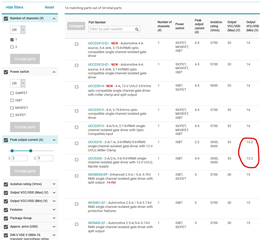Other Parts Discussed in Thread: UCC23513, UCC23313,
Hi,
I'm facing a problem when using the UCC5320S. I want to control the MOSFET ON and OFF by GPIO7. The mosfet is driven by UCC5320S.
Bench test results:
1) When GPIO7=LOW, IN+ =10V, OUTH = 15V, OUTL=15V. (MOSFET ON). This case matches with the third combination of the function table
2) When GPIO7=HIgh, IN+ =1V, OUTH = 15V, OUTL=15V. (MOSFET still ON). This case conflictes with the first combination of the funtion table. according to the function table, OUTL should be low. Is my thought right?

Below is my schematic. Can you help to review the schemaitc, is there any wrong in the schematic?

Thank you,
Ryan



